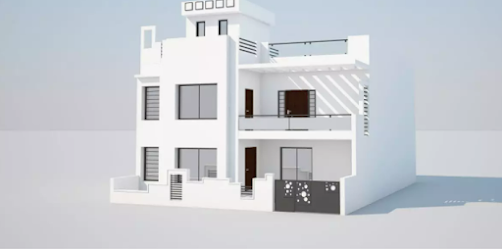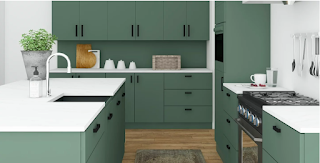3D Rendering Issues That Every Interior Designer Has To Face
3D Rendering Issues
Imagine a plush bouclé thrown across your lap as you sit in a womb-chair in your mid-century modern styled living room with a twist of wainscoting as you sit at the dormer window! If a few of the words above stumped you, you are not alone.
Why Interior Designers Generate 3D Renders?
A vast number of homeowners feel lost when experts passionately explain new ideas for your dream home. Does a contrived patina finish to enhance your foyer mirror? What even is that? Enter powerful 3D rendering software! Deeper and richer details are now conveyed easily.
Oftentimes industry jargon confuses the clients. And sometimes words, and even technical drawings for that matter, fall short. This oftentimes leads to a discord between clients and designers during the execution process.
Building a house involves money, time, labor, teamwork and lots of creative thinking. Hence the room for mistakes have to be carefully kept at a minimum.
The accuracy of 3D renderings and visualizations makes design tangible. It helps the clients, walkthrough and sees themselves in their possible future homes right away.
It builds trust in the designer capability to carve out their dream house. The client not only has seen their home before production but also collaborated on and approved it.
This is why 3d visualization is key. The result is a satisfied client and a faster approval process and a boost in business for the designer.
How Interior Designers Generate 3D Renders?
Starting from conceptual sketches to technical drawings and finally, to photorealistic images, there are a lot of skills necessary in 3D designing. Designers model 3Ds that match their clients’ wants and likes and craft a scene from their planned house.
However, most 3D software also requires in-depth industry knowledge. After numerous back and forth, the design is pinned down and the final model is assembled in a 3D modeler software. It is then exported to a rendering program or plug-in to render the image.
The out-put is a jaw-dropping, living and breathing image of your home.
3d visualization and rendering is a compelling marketing tool, as the clients can grasp clearly furnishing styles, texture, finishes, color schemes etc., placed into real-life space. Once these clients are reassured of the design by the realistic renders, the project generally progresses with little hick-ups.
But before we reach happily ever after, the 3D models, renderings and visualizations beg to be created. Designers encounter numerous issues and mistakes daily that demands speedy resolution.
Common 3D Rendering Issues:
1. Time, Money & Skill
Large firms have dedicated teams, professional state-of-the-art computers, powerful and expensive software that render stunning visuals, walk-throughs and animations for them on demand. This however be beyond the reach of individual designers, small firms, freelancers and students.
3D rendering engines often time offer only exorbitant annual subscriptions which means a huge upfront commitment. Not to mention, each year newer version releases, which may mean paid updates or a reinvestment.
With intricate settings, superfluous customization, an inefficient user interface, and hampering materials, mastering this software take time and patience and scores of skill.
The more detailed your model, the more complex your render process. And chances are, the application will conclusively crash. This can be extremely taxing when working on rigorous projects.
2. Art of Bouncing
Light bouncing is how a main point of light is “bounced” or redirected off of multiple objects like the ceiling or adjacent walls. This makes the original source light less harsh giving you an evenly scattered, soft throw.
In the real world, the sun and other unlimited sources of light, reflect off every surface in multiple directions, making our environment look cinematic.
3. Textures Tales
Everyone can readily call to mind the silky smoothness of a Pashmina or the coarse grains in a hemp rug.
Real-life is rife with objects that are different to touch. It’s of utmost importance that this tangible aspect of the physical world is translated into in 3d modeling. This is achieved through HD quality materials and textures. Texture quality impacts the end result, without which a photorealistic rendering is absolutely impossible.
4. Global Illumination Flickers
Once Global illumination (GI) is applied, materials that are lit in a scene multiply. While this brings more energy into your design, issues like color bleeding and flickering crop up.
When using bounce sources in a scene, we have to make sure the color quality of light is not compromised. Naturally, a yellow wall bouncing light casts a faint yellow-tinged light. This is referred to as color bleeding and needs to be corrected.
Click here for more info.





Comments
Post a Comment